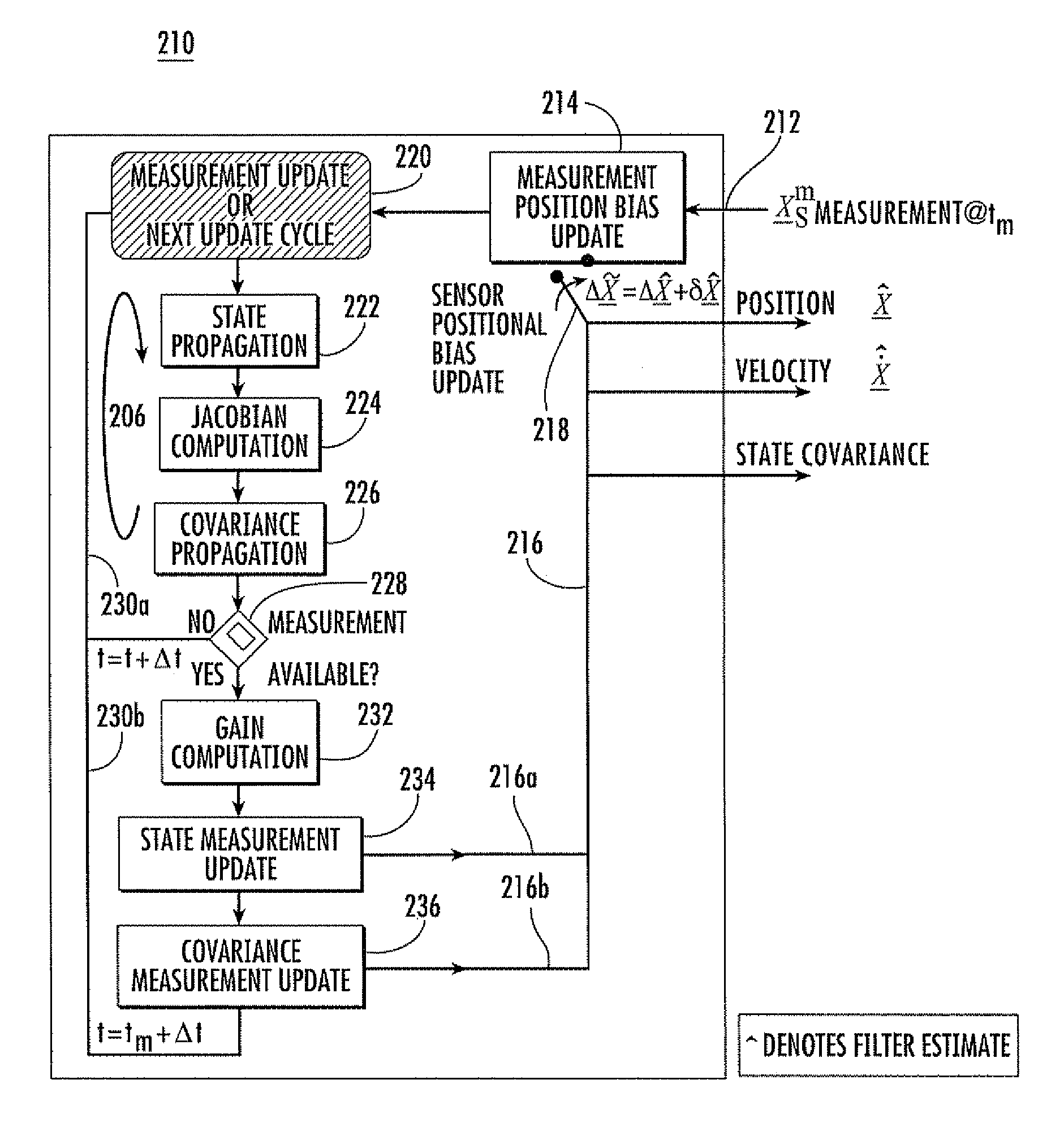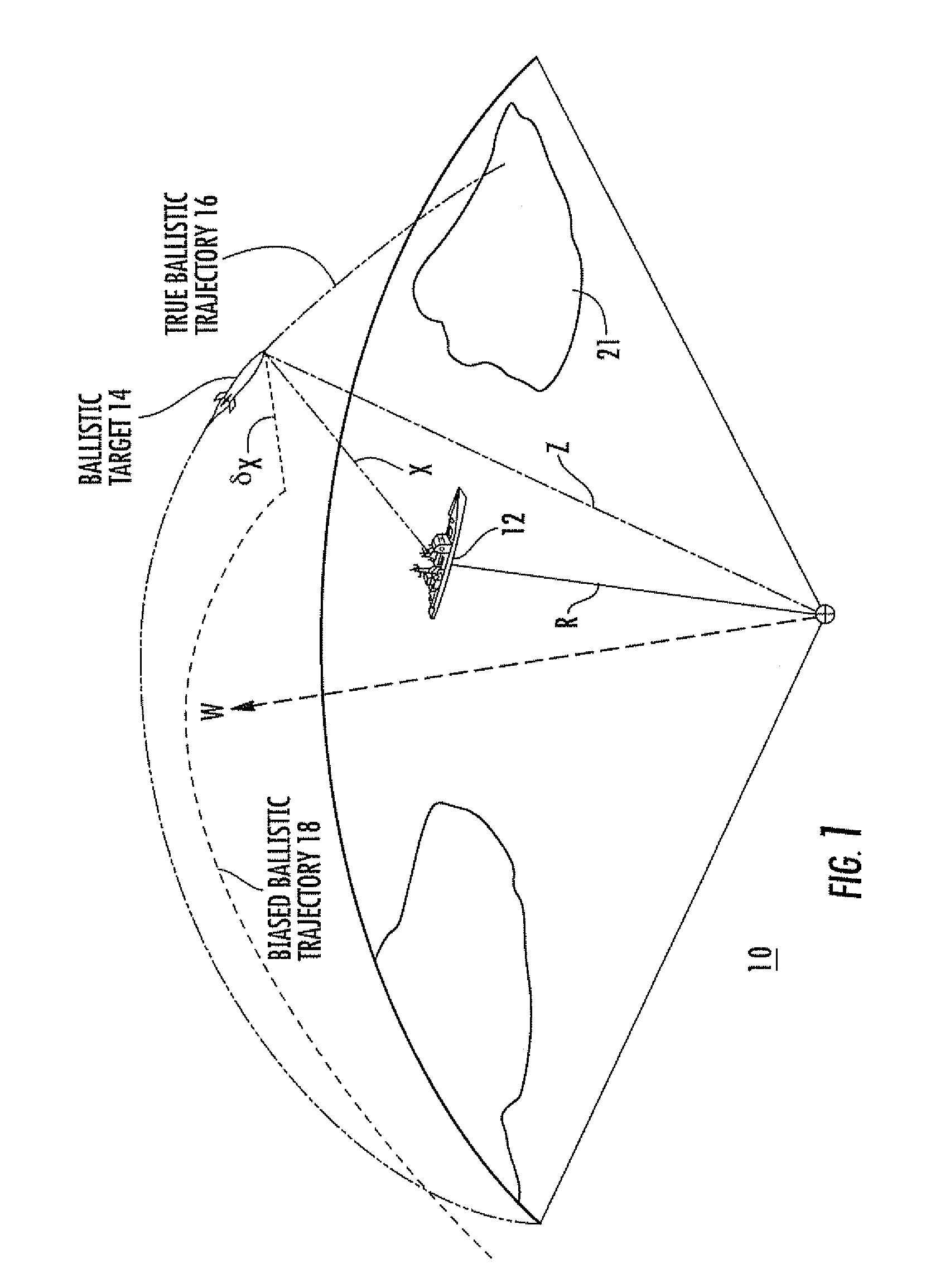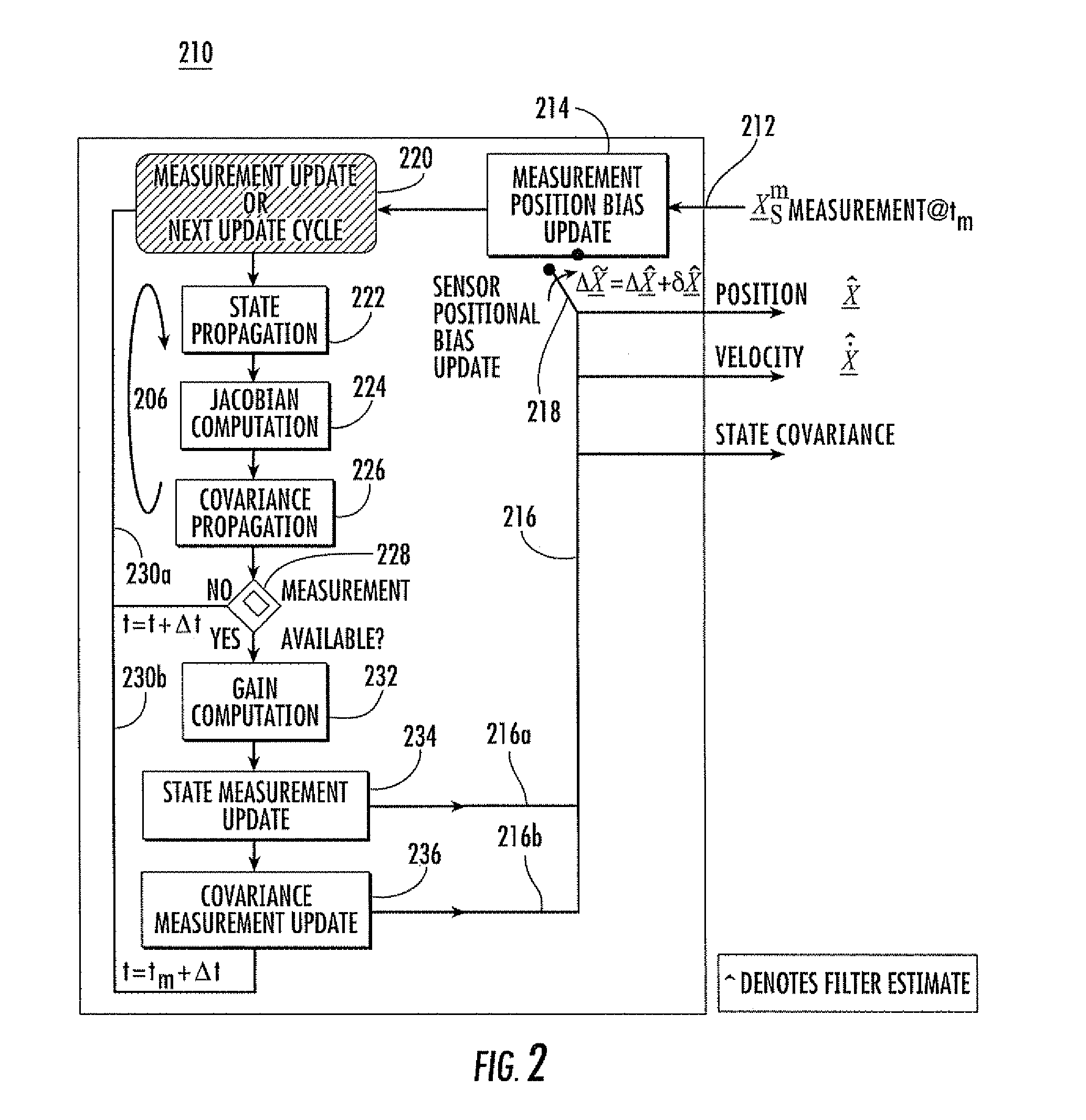Method for compensating for the positional errors of a sensor
a sensor and positional error technology, applied in the direction of direction finders, instruments, measurement devices, etc., can solve the problems of sensor position bias registration error, corrupted absolute positional reference estimates,
- Summary
- Abstract
- Description
- Claims
- Application Information
AI Technical Summary
Benefits of technology
Problems solved by technology
Method used
Image
Examples
Embodiment Construction
[0021]In general, the invention relates to a system called “Geo-Positional Sensor Level EStimation System” (GPSLESS). GPSLESS is a ballistic target track state estimator that incorporates an extended Kalman filter algorithm with an embedded real-time sensor registration estimator that estimates the positional sensor registration bias error. The intent is not to replace the GPS systems, but rather, GPSLESS provides a positional reference alternative, which may be used during GPS down times due to unavailability, jamming, or spoofing; or which may be used as a supplement to GPS. In some aspects of the invention, GPSLESS provides real-time updates to the positional bias registration error, while at the same time providing an enhanced ballistic track state estimate, unencumbered by positional registration bias errors. In other aspects, GPSLESS achieves positional sensor registration relative to the local geodetic coordinate frame for systems where the target acceleration is known, e.g. ...
PUM
 Login to View More
Login to View More Abstract
Description
Claims
Application Information
 Login to View More
Login to View More - R&D
- Intellectual Property
- Life Sciences
- Materials
- Tech Scout
- Unparalleled Data Quality
- Higher Quality Content
- 60% Fewer Hallucinations
Browse by: Latest US Patents, China's latest patents, Technical Efficacy Thesaurus, Application Domain, Technology Topic, Popular Technical Reports.
© 2025 PatSnap. All rights reserved.Legal|Privacy policy|Modern Slavery Act Transparency Statement|Sitemap|About US| Contact US: help@patsnap.com



